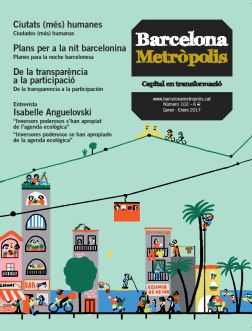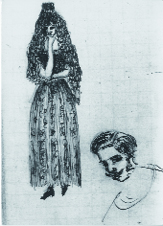As a renowned composer of piano pieces, an acclaimed performer and an educator who created his own school, Enrique Granados was deeply involved in the movements that laid the foundations for Barcelona’s solid musical culture.
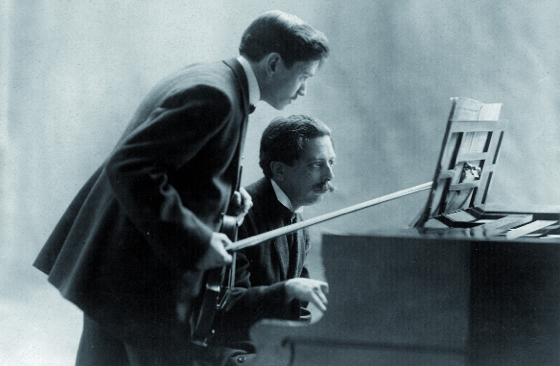
Enrique Granados on the piano, at a concert he performed at the Palace of Catalan Music (PMC) on 10 May 1908.
Photo: Audouard / Fondo Granados del Museu de la Música
Over the last few months, Europe has been commemorating the start of World War I, during the course of which mankind showed to what extent it is capable of ruining the difficult advances made in the sphere of human relations. The horror of the millions of deaths caused by the conflict goes beyond any comparison, but it should not stop us from looking back at the specific circumstances behind the tragic end of a Catalan composer who fell victim to the war: Enrique Granados (1867-1916).
Alongside Paul Wittgenstein, the Austrian pianist who lost the movement of his right arm in military action and who won the support of the musical world, especially Maurice Ravel – who wrote the famous Concerto for Left Hand for him – Enrique Granados is one of the war’s main musical victims. He died in the English Channel – together with his wife, Amparo Gal – when the ship in which they were returning from the United States – the Sussex – was torpedoed by the Germans. It was a war that his country was not even involved in.
Following this terrible incident, the news of the day highlighted the admiration that this composer and pianist had awoken in music circles because, straight away, a fund was set up to collect money for his six children, who had lost both their parents. People of all backgrounds and income levels, including the King of Spain, gave donations, and the huge sum of 120,000 pesetas was collected to alleviate the children’s plight.
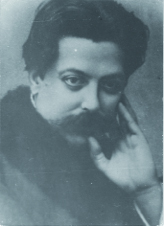
Portrait of a young Enrique Granados, dated 1905. Photo: Granados Fund, Barcelona Music Museum (MM).
Photo: Fons Granados del Museu de la Música
Enrique Granados i Campiña was born in Lleida in 1867, where his Cuban-born father had been posted by the army. Enrique moved to Barcelona to study music under Joan B. Pujol, founder of the so-called Catalan Piano School, and the great composer and musicologist Felip Pedrell. In 1883, at the age of sixteen, he had already won an academic competition linked to Pujol’s school. At the age of twenty, he went to Paris to try for the Conservatoire. However, like his contemporary and compatriot Isaac Albèniz, he was not admitted and ended up studying music with Charles-Wilfrid de Bériot, a pianist and son of the famous Belgian violinist and the no less famous singer Maria Malibran.
This was the extent of Granados’ incomplete musical training, from which he took everything he could, with a talent that no one could deny and as an artist with an inquiring mind. He returned to Barcelona two years later and became involved with the musical movements that were laying the foundations of a very solid musical culture in the city. An example of this was the performance of Piano Concerto in A minor by Edvard Grieg, a Norwegian nationalist who fitted into the Catalan context very well.
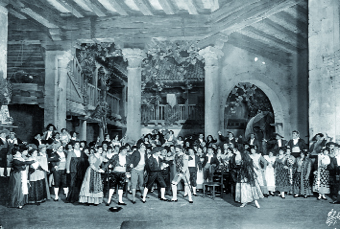
A scene from the opera Goyescas (inspired by Francisco Goya’s paintings) on its opening night at the Metropolitan, New York, 28 January 1916.
Photo: Fons Granados del Museu de la Música
These were years of intense activity, when it came to setting up concert programmes and associations such as the Catalan Society of Concerts, the Philharmonic Society of Barcelona and the Orfeó Català, all driven by the wish to normalise a life that had always been very uncertain. Granados stood out very early on, particularly because he worked with Enrique Morera on projects for the Catalan Lyric Theatre, a scheme to “Catalanise” a lyrical world excessively dominated by Spanish zarzuela, with works such as Blancaflor (by Adrià Gual), Petrarca, Picarol, Follet, Gaziel and Liliana (libretto by Apel·les Mestres), and two operas, Maria del Carmen (libretto by Feliu i Codina) and Goyescas (lyrics by Fernando Periquet).
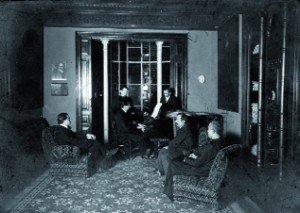
Enrique Granados on the piano at the centre’s second premises, on the corner of Carrer Girona and Carrer Aragó, in a photo dated 1910.
Photo: Brangulí / Fons Granados del Museu de la Música
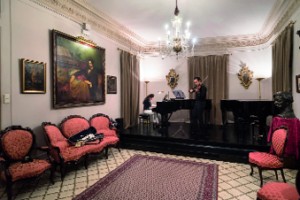
Two students rehearse in the current facilities of the Granados-Marshall academy, on Carrer del Comte de Salvatierra.
Photo: Dani Codina
He also stood out because he saw the need to set up a centre for piano studies. Acadèmia Granados, which he opened in 1901 and became a leading institution for piano technique. After Granados’ death it was run by Frank Marshall and then from 1959, by Alícia de Larrocha. Today, Acadèmia Granados continues to uphold the musician’s prestige and attracts students from all over the world. It has always been seen as a reference point for the pedal method (A Theoretical-Practical Method for the Use of the Piano Pedals) that Granados had developed based on what he had learnt in Paris. His numerous disciples included the soprano Conxita Badia as well as musicians with different specialisms and careers – albeit all of them composers – such as Josep Cumellas, Narcisa Freixas, Frederic Longàs i Torres, Robert Gerhard, Domènec Mas i Serracant, Cristòfor Taltabull and Margarida Orfila i Tudurí. New generations of admirers include pianists Carles and Giocasta Corma, Rosa M. Kucharsky, Alberto Giménez Atenelle, Carlota Garriga and Rosa Sabater.
At the turn of the 20th century, Granados plucked up the courage to create two short-lived orchestras, the Society of Classical Concerts (1900) and the Barcelona Orchestra (1905), both of which bore witness to his ambition to start projects that would fill the notable gaps in Barcelona’s musical life. He was also Music Director of the powerful Association of Chamber Music that brought the very best in European musical composition to Barcelona. And in 1912, thanks to the support of the developer of Tibidabo, Doctor Andreu (who a few years later donated a veritable fortune to the fund for the composer’s orphaned children), he opened the Sala Granados on Avinguda del Tibidabo, where he organised top-quality concerts. Years later, this venue (currently under threat of demolition) would be home to the dubbing company La Voz de su Amo.
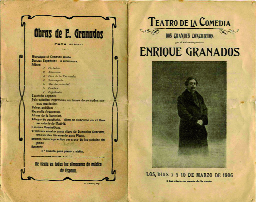
Programme for two recitals performed by Granados at Barcelona’s Theatre of Comedy (TCB) on 7 and 10 March 1906.
Photo: Fons Granados del Museu de la Música
Despite all his orchestra projects, Granados is renowned more for his piano pieces than for his symphonic composition. He left us more than three hundred works, including a complete repertoire of dances (Oriental, Danzas Españolas), waltzes (Valses Sentimentales, Valses Poéticos), the Goyescas suite and some unusual vocal pieces such as the Tonadillas en estilo antiguo and the Canciones amatorias. His aesthetic style was one of Neo-Romanticism, inspired by Schumann and Grieg, two composers who were in vogue in his lifetime, with Hispanist frills at a time when Spanish folk tradition was considered exotic and full of local colour.
Indeed it was Goyescas, a work originally created for piano but converted into an opera in order to finish a commission from the United States, that took him to the U.S. There, he was able to premiere the opera, make recordings for pianola rolls when this instrument was in its heyday (and it is thanks to them that we can hear his playing today) and to give a few piano concerts, including one at the White House on the request of President Woodrow Wilson (1912-1920), unique opportunities that ultimately led to his tragic death.
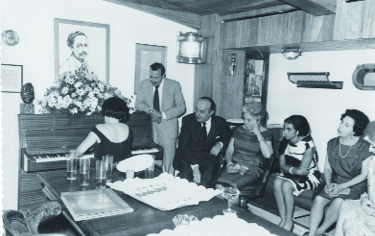
Tribute to the composer at the Camarote Granados, a space located on the ground floor of the Manila hotel, headquarters of the Granados Friends’ Association (AAC), in 1965.
Photo: Fons Granados del Museu de la Música
Granados had many descendants. His son Eduard (1894-1928) was a pianist and conductor. Another son, Víctor, was also a professional musician, albeit less renowned. But the name of Granados, because of the quality of his music and his personal story, has become a by-word for many aspects of the musical life of Catalonia. This is evidenced by the renaming of the Auditori de Lleida as the Auditori Granados, and the fact that a hall at the Auditori de Palma (Majorca) is also named after him. In Barcelona, apart from the street in the Eixample that bears his name, there are numerous public references to him, the most important of which was the Camarote Granados, a space on the ground floor of the Hotel Manila where the Association of Friends of Granados used to meet. The association, which was set up in 1965 on the initiative of his daughter Natàlia and her husband Antoni Carreras, along with Pablo Vila-Sanjuán, organised the publication of his diaries, Papeles íntimos de Enrique Granados. Many musical groups had also named themselves in his honour. Included amongst them was the Sextet Granados, famous for its performance at the opening concert of the Independent Composers of Catalonia (1931).



